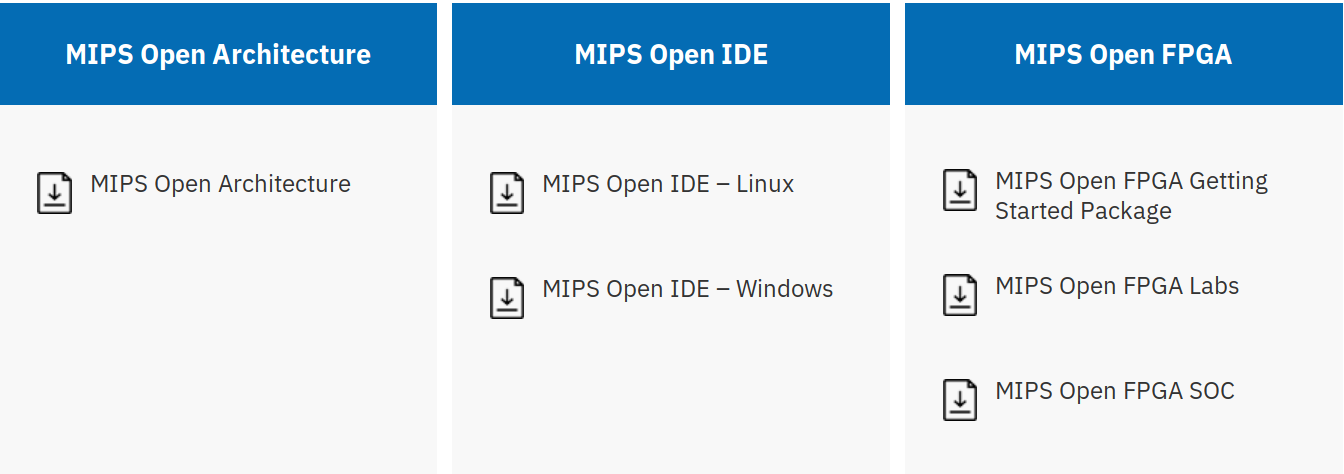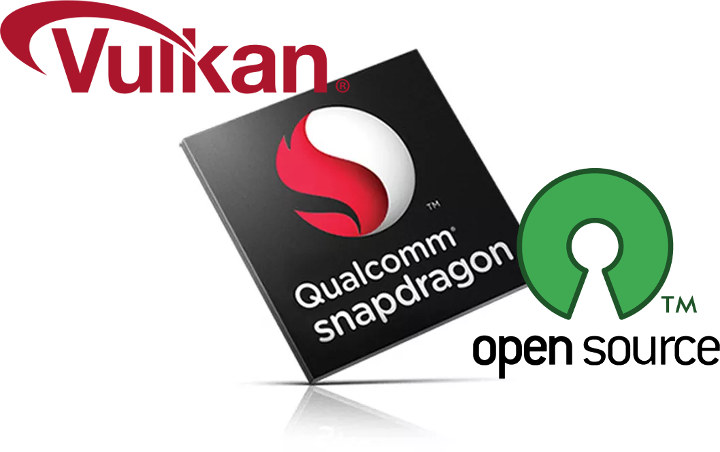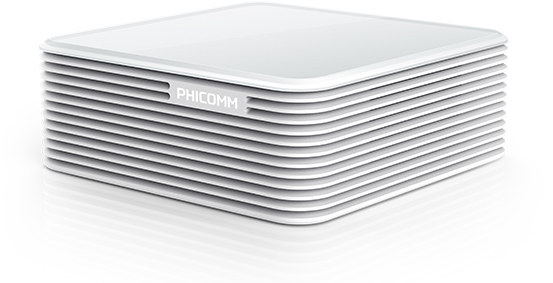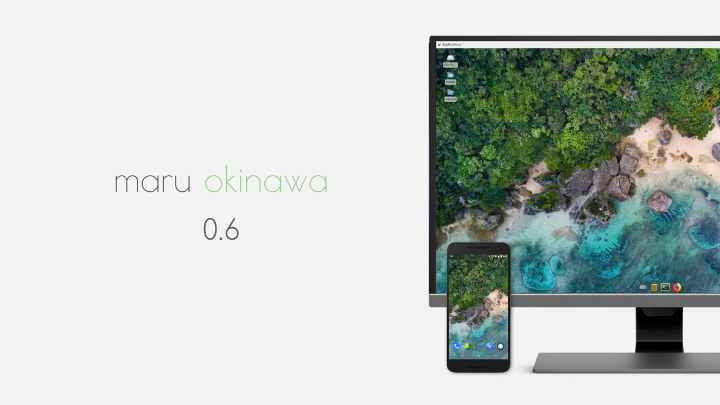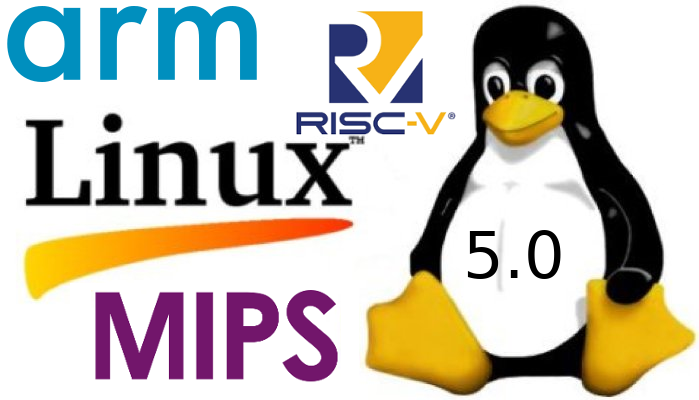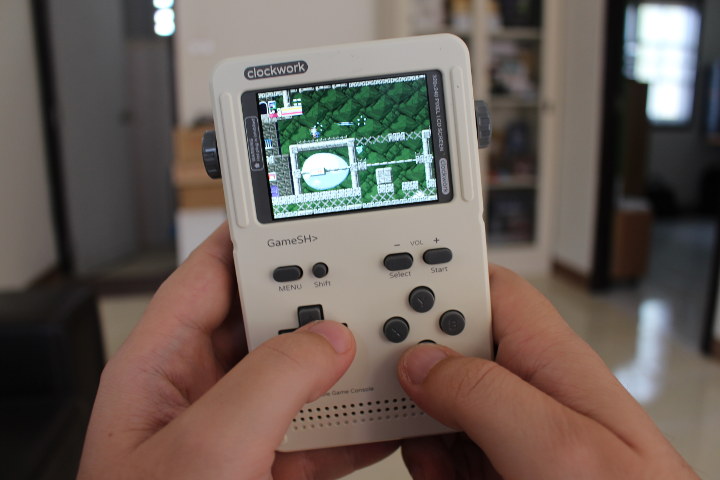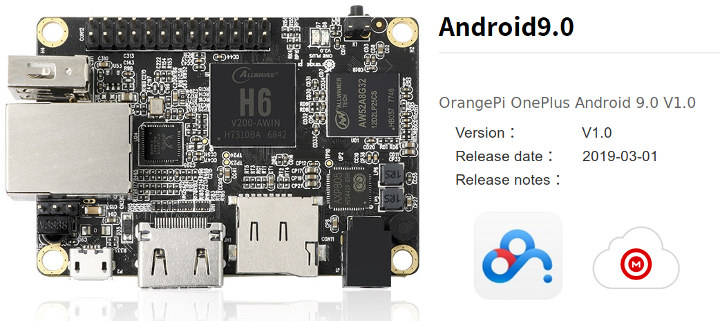In a surprise announcement last year, Wave Computing revealed their plans to open source MIPS architecture, and more specifically the new MIPS Release 6 architecture. The company has now started to deliver the goods with the release of the first MIPS Open Program components. Specific components of the first release include: MIPS ISA – The latest R6 version of the MIPS 32-and-64-bit architecture, including extensions such as virtualization, multi-threading, SIMD, DSP and microMIPS code compression MIPS Open Tools – Integrated development environment for embedded real-time operating systems and Linux-based systems for embedded products that enable developers to build, debug and deploy applications on MIPS-based hardware and software platforms; MIPS Open Field Programmable Gate Arrays (FPGAs)– A complete training program for community members that includes: Getting Started Package – Provides the MIPS FPGA system as a set of Verilog files, plus an overview and instructions on how to use the MIPS […]
Turnip is an Open Source Vulkan Driver for Adreno GPU
Qualcomm Adreno GPUs have one of the best open source GPU driver for Arm SoC thanks to Freedreno driver. The driver relies on OpenGL ES API however, and nearly four of years ago, Khronos introduced the Vulkan API that aims to reduce CPU resources usage, and adds support multiple command buffers. The good news is there has been development of a Vulkan driver for Adreno 500 and 600 series GPU called Turnip, also referred to as Freedreno_vk (Freedreno Vulkan) in the code. The Turnip driver has been developed by Bas Nieuwenhuizen, a Site Reliability Engineer at Google who also happens to be RADV (Radeon Vulkan) lead developer, Chia-I Wu, a Google software engineer working on Android graphics, Chad Versace, Intel’s software engineer working on Linux OpenGL stack, and others as revealed by a recent merge into Mesa 19.1 slated to be released next quarter. Via Phoronix Jean-Luc Aufranc (CNXSoft)Jean-Luc started […]
FOSSASIA 2019 Schedule – March 14-17
As its name implies, FOSSASIA is a Free and Open Source Software event taking place every year in Asia, more specifically in Singapore. I first discovered it last year, and published a virtual FOSSASIA 2018 schedule last year to give an idea about the subjects discussed at the event. It turns out FOSSASIA 2019 is coming really soon, as in tomorrow, so I’m a bit late, but I’ll still had a look at the schedule and made my own for the 4-day event. Thursday – March 14, 2019 10:05 – 10:25 – For Your Eyes Only: Betrusted & the Case for Trusted I/O by Bunnie Huang, CTO Chibitronics Security vulnerabilities are almost a fact of life. This is why system vendors are increasingly relying on physically separate chips to handle sensitive data. Unfortunately, private keys are not the same as your private matters. Exploits on your local device still have […]
Phicomm N1 Android 7.1 TV Box Supports Multiple Linux Distributions
I like to look at new hardware platforms supported by Linux mainline, and recently covered MapleBoard MP130 SBC which I found in Linux 5.0 changelog. Today, I had a look at another device. Phicomm N1 is an Amlogic S905D powered TV box running Android 7.1 with a user interface geared towards to the Chinese market. Nothing that interesting so far, but a topic on Armbian forums made it more interesting as the box comes with a larger heatsink than most other cheap TV boxes, a 12V/2A power supply which should allow you to connect several USB hard drives, and potentially more importantly, it became popular among Chinese users, with the community releasing several Linux based distributions for the device including CoreELEC, LibreELEC, Alpine Linux, CentOS, Debian, Deepin, ArchLinux Arm, and more. Phicomm N1 hardware specifications: SoC – Amlogic S905D quad core Arm Cortex-A53 processor @ 1.5 GHz with Arm Mali-450 […]
Maru 0.6 Combines LineageOS & Debian 9, Supports Wireless Desktop Streaming
Maru OS was first unveiled in 2016 as a smartphone operating system that relies on Android on the go, and Debian while connected to an HDMI display, and Bluetooth keyboard and mouse. The downside was that it only works on Nexus 5 at the time, but Preetam D’Souza open sourced his solution, and more people joined the project to expand the number of supported hardware platforms. I had not heard about the project for a while, but Maru 0.6 Okinawa has just been released with the three main changes being the switch from Android 6.0.1 AOSP to a custom version of LineageOS based on Android 8.1.0 to support a broader range of devices, the upgrade from Debian 8 to Debian 9, and support for wireless desktop streaming meaning you don’t need a phone with HDMI / MHL support anymore. The reliance on AOSP meant Maru used to only work on […]
Linux 5.0 Release – Main Changes, Arm, MIPS & RISC-V Architectures
Linus Torvalds has just released Linux 5.0: Ok, so the last week of the 5.0 release wasn’t entirely quiet, but it’s a lot smaller than rc8 was, and on the whole I’m happy that I delayed a week and did an rc8. It turns out that the actual patch that I talked about in the rc8 release wasn’t the worrisome bug I had thought: yes, we had an uninitialized variable, but the reason we hadn’t immediately noticed it due to a warning was that the way gcc works, the compiler had basically initialized it for us to the right value. So the same thing that caused not the lack of warning, also effectively meant that the fix was a no-op in practice. But hey, we had other bug fixes come in that actually did matter, and the uninitialized variable _could_ have been a problem with another compiler. Regardless – all […]
GameShell Kit Review – Part 2: An Hackable Retro Gaming Console
ClockworkPi GameShell is an hackable retro gaming console combining Arm Linux and Arduino boards that happens to come in kit form, and that’s lot of fun to assemble as we’ve seen in the first part of the review of ClockworkPi GameShell. Since then I’ve had time to have more fun, play some games, and experiment with the device, so I’ll report my experience and point out the good parts, as well as some of the shortcomings I came across. We can press the power button to start it up, and after a few seconds we get to the main menu with several icons including… the self-describing Settings, Retro Games with MAME, MGBA, NESTOPIA, and PCxs emulators that require your own ROMs/BIOS, as well as Indie Games with ready to play games like OpenTyrian spaceship shooting game, or NyanCat. Moving on to the right of the menu we’ve got the famous […]
Orange Pi Software Releases – Android 9.0 Firmware, Linux Source Code for RK3399 / MT6737
Shenzhen Xunlong Software is used to release many different variations of their Orange Pi boards, and more often than not they tend to launch their boards fairly early before the software is fully ready. Many of their boards get supported by the community thanks to Armbian, linux-sunxi, etc… but sometimes the company does release firmware or source code themselves, as they did in the last two days with Android 9.0 firmware for one of their Allwinner H6 board, and Linux source code for Orange Pi 4G-IoT and Orange Pi RK3399. Android 9.0 for Orange Pi One Plus Launched in 2017, Orange Pi One Plus was the very first Allwinner H6 SBC launched on the market, and supported Android 7.0 at the time. But following the release of Android 9.0 for Allwinner H6 TV boxes a few weeks ago, you can now also upgrade your Orange Pi One Plus to Android […]


